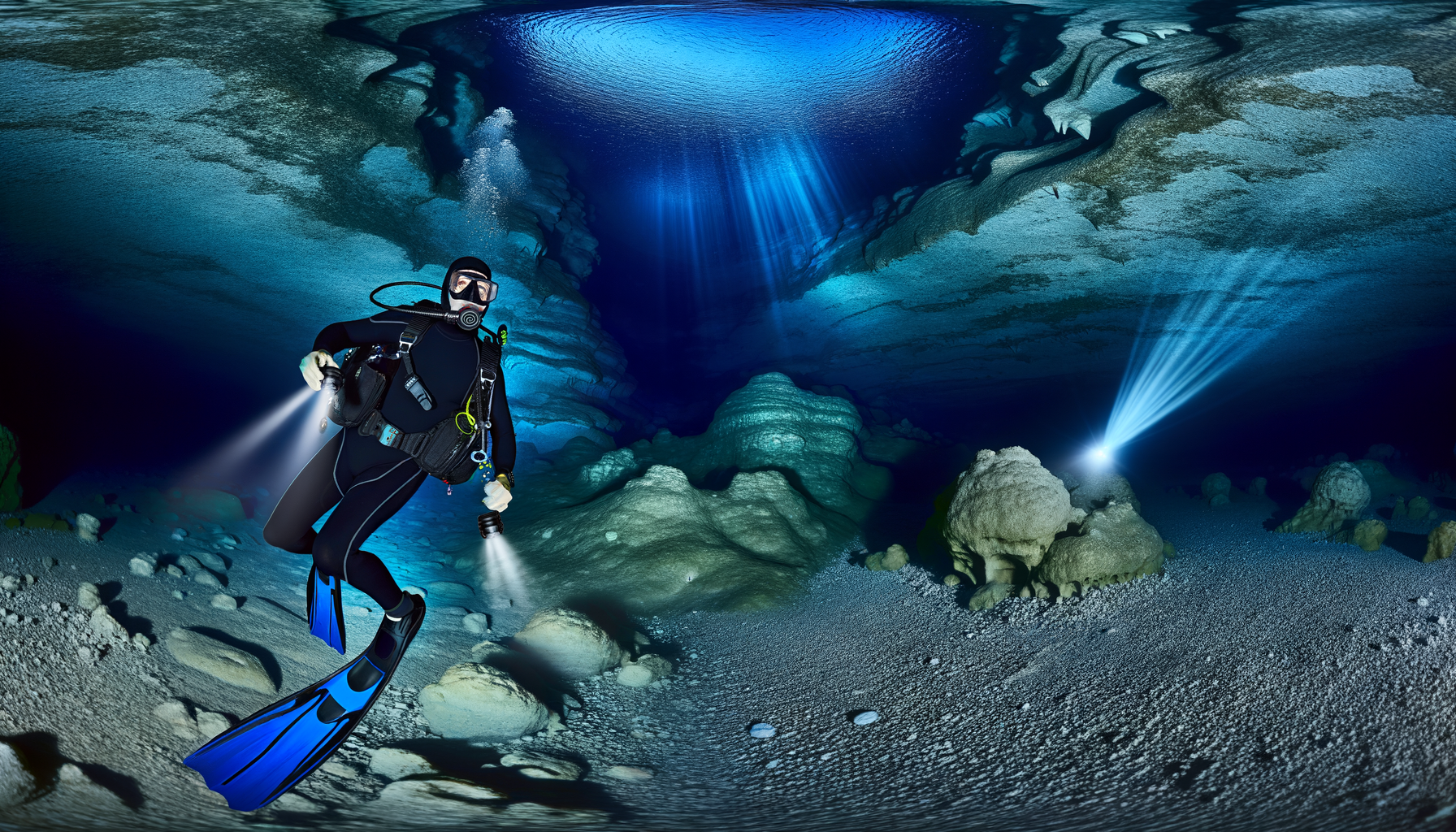
The Allure of Cave Diving
Cave diving merges the excitement of scuba diving with the marvels of caving, creating an extraordinary adventure. Both cave and marine realms showcase some of the most remarkable and varied ecosystems on Earth. With scant light, food, or oxygen, underwater caves are brimming with rare life forms that are seldom seen and not fully understood by humans. Cave divers have made groundbreaking discoveries, from new bacteria aiding in the study of antibacterial resistance to previously unseen animal species and ancient humanoid remains that redefine our understanding of human evolution. Contrary to the belief that our planet is fully explored, vast mysteries remain hidden within caves both above and underwater. Endless Discovery
Even fully explored caves captivate with their unique rock formations and alien landscapes, while the inherent challenges of cave diving add to the allure. Common Cave Diving Hazards
Despite its appeal, cave diving ranks among the more perilous scuba activities, akin to ice and wreck diving, as it involves penetration diving and is deemed technical. Divers must navigate carefully, manage oxygen meticulously, and use dive lights and guide lines to combat low visibility and potential silt-outs. Decompression stops are also necessary during ascent due to extended time spent at depth. Unique Cave Diving Challenges
In caves, divers may face extensive, labyrinthine passages, unpredictable rock formations, falling rocks, and strong currents that can either aid or hinder their movement, affecting gas usage. Safety Essentials for Cave Diving
Proper training and precautions can mitigate the risks associated with cave diving. Cave divers adhere to the TGDAL checklist: Training, Guide, Depth, Air, Light, which is also remembered as “The Good Divers Always Live.” Training
Accredited certification is crucial to begin cave diving, as most cave diving accidents stem from lack of training or overestimation of one’s capabilities. Guide Lines
Divers should maintain a guide line from the dive leader to an outside point in open water, with an additional tie-down near the cave entrance for safety. Depth Rules
Awareness of depth and adherence to decompression protocols are vital, especially if accidental depth deviations occur. Air (Gas Management)
The rule of thirds is a guideline for air usage, though adjustments may be necessary based on cave water flow. An appropriate gas mix for the planned depth is also essential. Dive Lights
Adequate lighting is critical, with divers typically carrying a primary light and two backups. Cavern vs Cave Diving: What Is the Difference?
Open water diving near caverns is the initial step, followed by cavern diving, which is limited penetration with visibility of the entrance and natural light. Cave diving delves deeper and transitions into technical diving, requiring certification, fitness, and specialized gear. Cave Diving Certification
Various organizations offer courses for aspiring cave divers. While PADI provides a Cavern Diver specialty course, the NSS-CDS offers a range of cave diving classes, including basic and advanced levels, surveying, cartography, and first responder training. Diving Techniques in Caves
Cave diving necessitates specialized techniques and exceptional buoyancy control. Divers must use movements that minimize silt disturbance, such as frog kicks, flutter kicks, back kicks, helicopter turns, and pull-and-glide techniques. Best Equipment For Cave Diving
Cave divers require robust equipment suitable for rocky, deep, and cold conditions, emphasizing reliability. Recommendations include stiff fins like the Jet Fin, durable regulators such as the MK19/G260 Carbon Regulator, powerful dive lights like the Nova 850 Tec, low-profile masks with black frames and wide lenses, and appropriate scuba suits for cold environments. The Worthwhile Challenge of Cave Diving
With the right certification and precautions, cave diving can be both safe and exhilarating. Cave divers are often explorers and sometimes rescuers, with the chance to witness the unseen beauty and explore like no other. The rewards for those willing to take on the challenge are boundless, from breathtaking scenery to the thrill of discovery.



